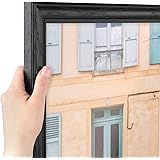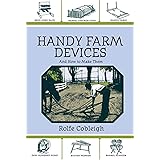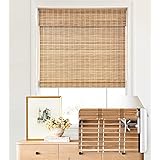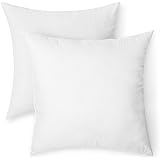In an era where home organization often comes with a premium price tag, the allure of a clever, cost-effective solution is undeniable. The viral sensation showcased in the video above, a brilliant Kmart kitchen hack totaling just $30, exemplifies how ingenuity can triumph over exorbitant costs. This project, centered around two $15 Kmart 4-Tier Pantry Caddies and a few humble $1.32 pine palings, transforms basic components into a robust, aesthetically pleasing storage unit. It’s a testament to the power of modular design and strategic material repurposing, delivering significant functional uplift without a substantial financial outlay.
Achieving an optimized kitchen or pantry setup doesn’t always necessitate custom cabinetry or high-end fixtures. Instead, as this Kmart kitchen hack demonstrates, a discerning eye for versatile components and a readiness for hands-on creation can yield impressive results. This approach empowers homeowners and renters alike to tailor their spaces to precise organizational needs, bypassing the limitations and costs associated with pre-fabricated systems. We delve deeper into the strategic elements that make this budget-friendly DIY kitchen storage solution not just practical, but genuinely transformative.
Deconstructing the $30 Kmart Kitchen Hack: A Blueprint for Efficiency
At its core, this celebrated Kmart kitchen hack ingeniously leverages the inherent structural stability of readily available items. The foundation relies on two Kmart 4-Tier Pantry Caddies, each retailing for a mere $15. These caddies, typically designed for narrow pantry spaces, serve as the vertical framework for our custom shelving unit. By doubling up on these elements, a wider, more stable base is established, providing ample support for the horizontal surfaces.
Conversely, the horizontal elements are introduced through the strategic integration of 100 x 12mm 1.5m Fence Paling H3 Treated Pine CCA. While primarily intended for exterior fencing due to its H3 treatment for insect and fungal resistance, its affordability and workability make it an exceptional choice for such an internal DIY project. This selection highlights a pragmatic approach to material sourcing, prioritizing cost-effectiveness and adaptability. The combination creates a robust, multi-tiered shelving system, ready for customization.
The Anatomy of a Modular Solution: Kmart Pantry Caddies as Structural Backbone
The Kmart 4-Tier Pantry Caddy, often overlooked in its primary role, possesses design characteristics that make it ideal for this hack. Its open-wire construction, while lightweight, provides a surprising degree of torsional rigidity when used in tandem. When two units are positioned side-by-side or joined, they create a wider aperture and enhanced lateral stability, mitigating potential racking forces. This modularity is key, allowing for scalability based on the available space and storage requirements.
Furthermore, the inherent gaps in the caddy’s design facilitate the easy insertion and securing of the pine palings. These gaps act as natural channels, enabling the timber to be snugly fitted, or even secured with zip ties or small fasteners for added structural integrity. This design foresight reduces the complexity of assembly, making the project accessible even to those with minimal DIY experience. The resulting framework is a testament to clever repurposing.
Strategic Material Selection: The Pine Paling Perspective for DIY Kitchen Storage
The choice of 100 x 12mm 1.5m Fence Paling H3 Treated Pine CCA at just $1.32 per length is a critical enabler for the budget-friendly nature of this DIY kitchen storage unit. Pine, as a softwood, is renowned for its ease of cutting, drilling, and finishing, making it a highly accessible material for amateur DIY enthusiasts. Its relatively low density contributes to the overall light weight of the assembled unit, simplifying relocation if needed.
While H3 treated pine is typically specified for outdoor applications due to its chemical treatment against decay and insect attack, its use here underscores a focus on material economy. For interior projects, untreated alternatives like common dressed pine or even plywood cut to size could also be considered, potentially offering a cleaner, untreated aesthetic if preferred. However, the treated option’s low cost and ready availability make it an undeniably attractive proposition for those prioritizing budget above all else. Understanding the properties of timber is paramount for successful home projects.
Crafting Your Custom Kmart Storage Unit: Practical Assembly & Safety
Assembling this Kmart kitchen storage unit requires a methodical approach to ensure both stability and longevity. The first step involves positioning the two 4-Tier Pantry Caddies parallel to each other, maintaining a consistent distance that accommodates the length of your cut pine palings. Precise measurements are crucial at this stage to prevent an unbalanced or misaligned final product. Utilise a tape measure and mark your desired cutting lines on the palings with a pencil for accuracy.
When cutting the pine palings, a hand saw, jigsaw, or circular saw can be employed, depending on tool availability and comfort level. Always ensure a stable workbench and appropriate personal protective equipment (PPE), such as safety glasses and gloves. Once cut to length, these timber pieces are then integrated into the caddy framework. They can be laid across the existing wire shelves, or, for enhanced stability, secured using small zip ties, wood screws, or even industrial-strength adhesive if a permanent bond is desired. This reinforcement prevents accidental dislodgement and enhances the unit’s load-bearing capacity. Always test the stability before loading with heavy items.
Beyond the Build: Elevating Aesthetic and Functionality of Your Budget Kitchen Solutions
The beauty of this budget kitchen solution lies not just in its cost-effectiveness, but also in its potential for personalization. Once the structural framework is complete, the unit serves as a blank canvas awaiting aesthetic enhancements. For a sleek, modern finish, consider sanding the pine palings lightly and applying a coat of paint matching your kitchen’s existing color palette. Alternatively, a wood stain or clear varnish can highlight the natural grain of the pine, offering a more rustic or organic appeal. This attention to detail elevates the humble components into a designer-inspired piece.
Functionally, the unit can be adapted for a multitude of storage needs beyond a simple pantry overflow. It’s perfectly suited for housing small appliances like blenders or toasters, organizing cookbooks, or displaying decorative items to enhance the kitchen aesthetic. Incorporate small bins, baskets, or drawer inserts to further compartmentalize storage and maintain a clutter-free environment. Think of it as a vertical village for your kitchen essentials, each level serving a distinct purpose.
Optimizing Kitchen Layouts with Vertical Integration: A Core Design Principle
The philosophy underpinning this DIY kitchen storage project is deeply rooted in the principle of vertical integration. In many kitchens, particularly those with limited floor space, horizontal surfaces quickly become congested. This hack consciously shifts the focus upward, transforming often-underutilized vertical real estate into highly functional storage. It’s an architectural skeletal framework that expands usable space without encroaching on valuable countertop or circulation areas.
By stacking items vertically, not only is precious counter space freed up, but accessibility is also improved. Items are no longer buried behind one another; instead, they are presented at various eye levels, making inventory management and retrieval more efficient. This strategic use of height can significantly impact the overall flow and functionality of a kitchen, mimicking the advantages of bespoke shelving systems without the associated investment. It’s about working smarter, not harder, to achieve spatial efficiency.
The Broader Implications of Budget-Friendly DIY: Empowering Kitchen Organization
This Kmart kitchen hack transcends its immediate utility as a storage solution; it embodies a larger trend towards accessible, empowering DIY. In a consumer landscape often dominated by expensive, ready-made options, projects like this remind us that sophisticated organizational systems can be crafted from humble beginnings. It fosters a sense of accomplishment and ownership, transforming a generic space into one that genuinely reflects individual needs and aesthetic preferences. It demonstrates that effective kitchen organization does not require a hefty budget, but rather a creative mindset and a willingness to engage with simple materials.
Ultimately, the $30 Kmart kitchen hack is more than just a clever assembly of parts. It’s a statement about resourcefulness, sustainable consumption, and the democratization of interior design. It encourages individuals to look beyond the intended purpose of everyday items and envision their potential as building blocks for personalized, functional, and beautiful spaces. For anyone seeking to enhance their kitchen’s efficiency and aesthetic without breaking the bank, this hack provides a compelling template to follow, proving that innovative design can indeed be remarkably affordable.











